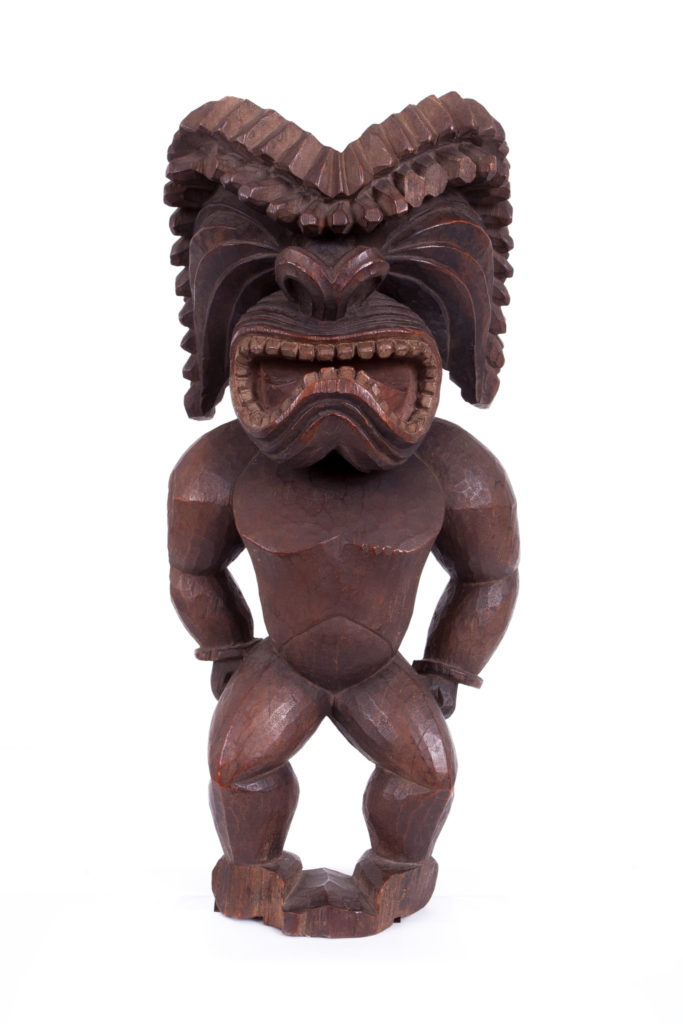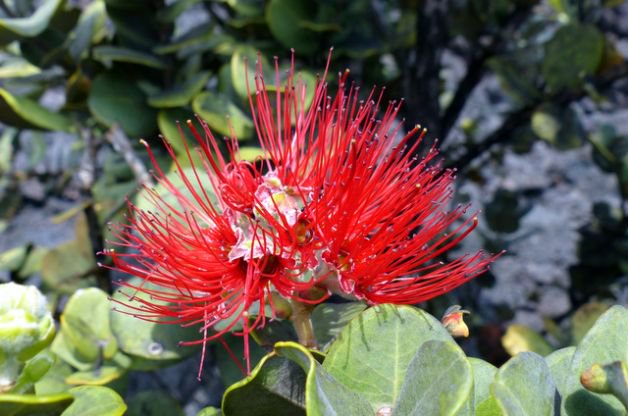
Ki’i now in the Bishop Museum
During my brief professorial career, I would typically conduct my class meetings in the better public galleries, and as this all took place in London, one can imagine the splendid offerings in front of which I would expatiate. Actually, that didn’t happen much, expatiate, I mean, as I was always more interested in what the students were interested in, and found the time spent a bit more productive if there was interaction. Of course, Socrates figured all this out quite a little while ago, and doubtless did this lots better than I ever could. Nevertheless, query and response were always my method. For those students who expected whatever I had to say to wash over the top of them, as it were, and then to have information absorbed like liniment- well, it never happened that way.
In any event, the question I always began with, oftentimes in the National Gallery, was what is it that constitutes a piece of museum quality? Trick question, but the answers I typically got were the obvious ones, and usually, perhaps always, with ‘masterpiece’ as a defining term. My gentle readers will doubtless recoil at the use of this overworked, and inaccurately used, term. ‘Masterpiece’ for those in the trade is more specifically defined, as it would in any guild from the 12th century onward, as the workshop production of someone of some seasoning and acknowledged skill who then executes something of sufficient quality within his sphere to then qualify as a master. Apprentice, then journeyman, then master. Simple, and simply defined for 10 centuries.
But that doesn’t answer what I had hinted was a trick question, viz what constitutes museum quality- and the answer, simply that it is in a museum. The fact is, in the best institutional collections supported by the best curatorial scholarship, pieces end up there that while they may be good, they also may not be. One can watch the auction market these days to find that pieces once vaunted and given pride of place in some of the world’s best collections are sold off- ‘sold to support future acquisitions’, which is code for saying the piece is not quite as good as once thought. Often, though, what was acquired had at least as much to do with who gave the object as the object itself. If something is presented to a museum by a particular grandee, the acquisitions committee would be at great pains to turn it down.
It is sadly the case that one of my favorite museums, The Bishop Museum in Honolulu, is now possessed of a shall we say questionable ki’i representing a war god, given it in 2018 by tech titan Marc Benioff. Purchased at Christie’s in Paris by Benioff for about $7,500,000 for the specific purpose of giving it to the Bishop Museum, it has been characterized by ethnographic dealer Daniel Blau as ‘the sort of thing you see in a tiki bar.’ That the ki’i has gone on display at the Bishop Museum as the centerpiece of a major exhibition has so far generated a fair bit of heat, as the piece has no known provenance prior to the 1940’s. Frankly, when it was offered last year, it appeared to me the piece was in much, much too good a condition and with the carving much too crisp to be of the age it was claimed. To my knowledge, there was no scientific testing done to determine age- either prior to auction or subsequently- with reliance given to recent provenance, that of the private collection of tribal art dealers father and son Pierre and Claude Verite.
With a discussion about the piece published in a recent edition of The New York Times penned by their redoubtable arts journalist Scott Reyburn, Mr Reyburn hints that donor Marc Benioff might be in trouble with the IRS for having donated an expensive work that may be shown to be worth substantially less. If Mr Benioff were duped, it appears to me that his motivation for making the purchase for immediate repatriation to Hawaii shows nothing more than that his heart is in the right place. For the time being, the ki’i remains on display and given pride of place, but one wonders how much the Bishop Museum has overlooked before it was accepted as part of its permanent collection. That Mr Benioff would by any nonprofit organization be considered a heavy hitter might in this day and age of difficult sledding for public institutions of art and culture might result in an occlusion of normal curatorial skepticism.
For myself, I can say that very many of my own acquisitions of Hawaiiana were made in Europe- fascinated as Europeans were with the exotic ethnographica collected in the late 18th and through the middle of the 19th centuries, I do find from time to time isolated good pieces that have come on to the art market, though with a provenance lost in the mists of time. But as with so much else, demand spurs imitation, and doubtless the interest in Hawaiian material resulted in the production of items that when they were produced may have been kitsch, but in the fulness of time, might now be seen as the genuine article. The now disputed ki’i was described when it was offered by Christie’s as a ‘mate’ to an example contained in the collection of the British Museum. Hmmm….a ‘mate’ you say? Were there multiples of this type of material produced in prediscovery Hawaii? No, there were not. Of a style, yes- multiples, no. Perhaps something someone thought it worthwhile later to copy- not unlikely.
I notice from the article in The New York Times, the subject ki’i is carved from ‘Hawaiian medisteros’, or what any kama’aina would know more commonly as ‘ohia lehua. As it happens, I did acquire two ‘long’ ki’i from an ethnographic collection in England. Tall and heavy, with some age, the ki’i in my own collection were probably shall we say repurposed from old railway sleepers, something in abundant supply from the late 19th century when so much of Hawaii island was cleared for the planting of sugar cane. Was I duped into thinking my acquisitions were prediscovery? No, but perhaps if I had the length of purse of someone much better heeled my resultant cost might have been much different.



